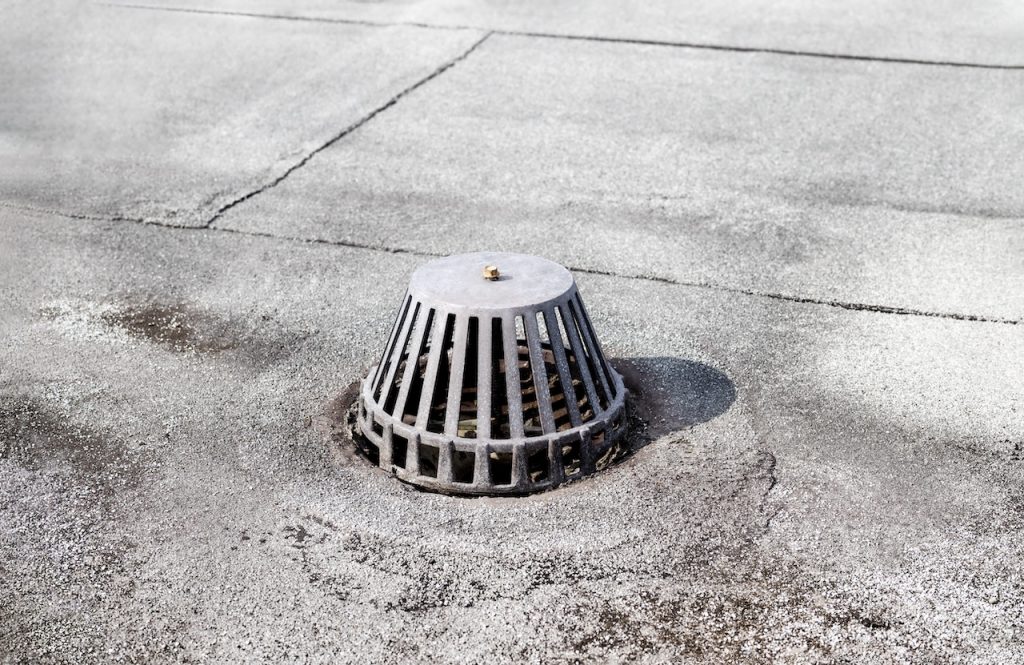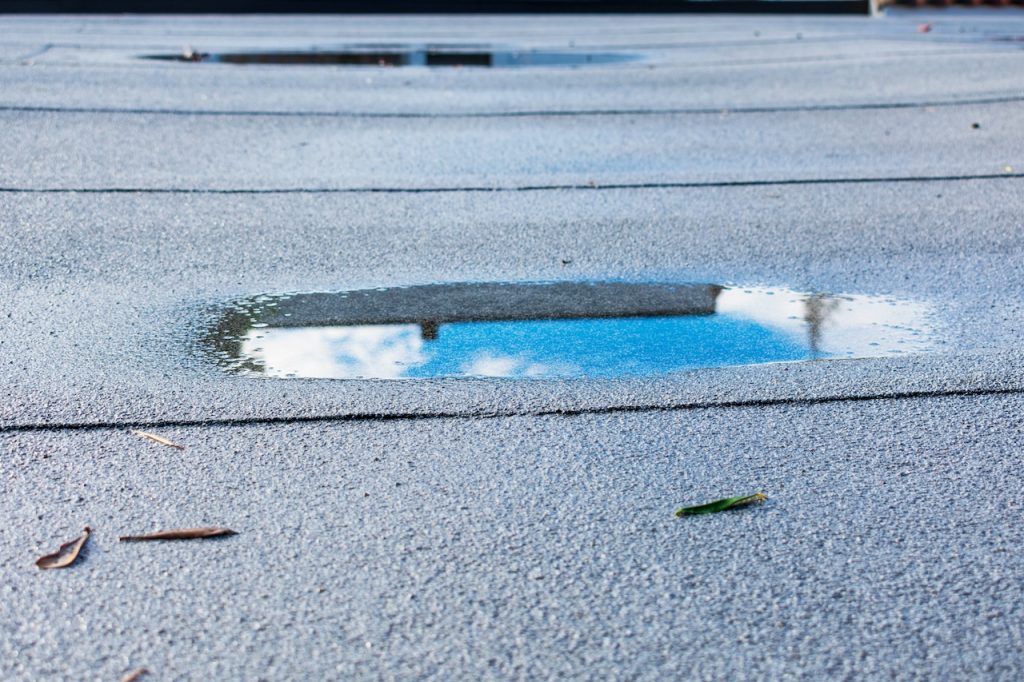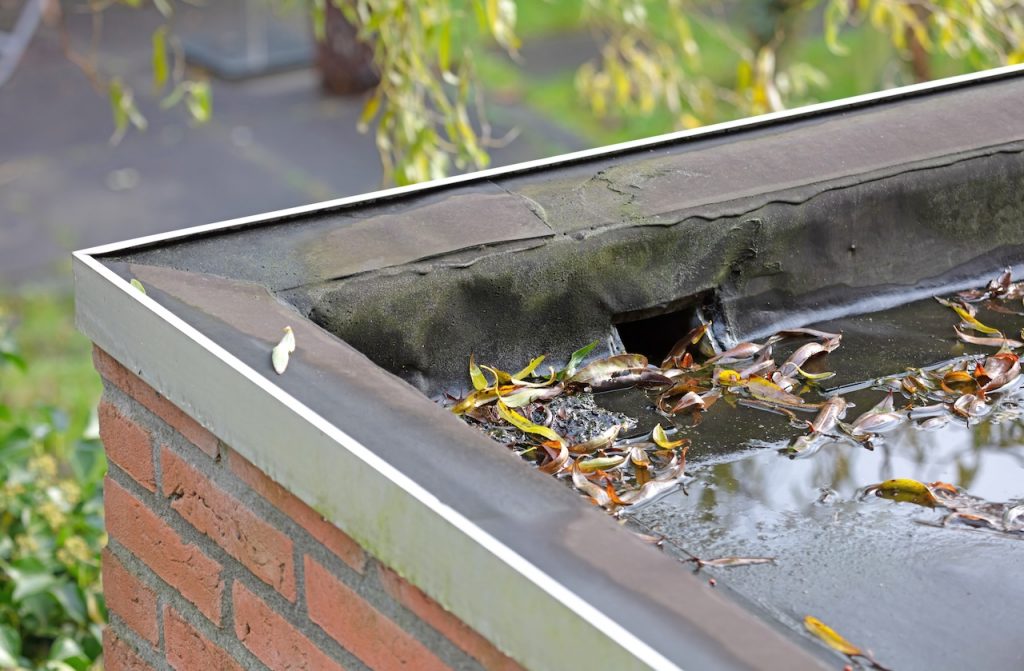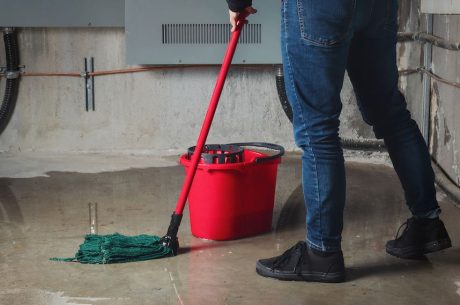Flat roofs can offer a sleek, modern look, but without proper drainage, they can become a nightmare. When water pools on your roof, it can lead to leaks, structural damage, and expensive repairs. Understanding the importance of flat roof drainage, the common systems available, and regular maintenance practices will help protect your investment.
Why Proper Flat Roof Drainage is Crucial
Unlike sloped roofs that naturally shed water, flat roofs rely on efficient drainage systems to prevent water from pooling. Poor drainage leads to leaks and can damage the roof’s integrity, causing rot, mold growth, and structural issues. With effective flat roof drainage, you can avoid these problems and extend the lifespan of your roof. For more information on flat roof damage, visit the U.S. General Services Administration (GSA).
Common Flat Roof Drainage Systems and Their Benefits

Interior drains are strategically placed in the middle of the roof to collect water and channel it through pipes inside the building.
Several types of drainage systems are designed to keep flat roofs free from water buildup. Here are the most common options and their benefits:
- Interior Drains: Interior drains are common for commercial buildings but can also be used in residential settings. These drains prevent water from spilling directly over the edges of the roof, reducing potential damage to walls and landscaping.
- Scuppers: Scuppers are openings along the edge of the roof that allow water to flow off into a gutter system or directly to the ground. They’re simple but effective for moving large amounts of water off the roof quickly. These are low-cost and require little maintenance. They work well in areas that experience heavy rainfall, providing a reliable way to prevent water pooling.
- Gutters: Gutters are the most familiar drainage system for flat roofs. They run along the edges of the roof, collecting water and directing it down through downspouts. Gutters are affordable and relatively easy to install. When combined with downspouts, they effectively channel water away from the building, protecting the foundation from water damage.
Preventing Water Pooling and Leaks

Water pooling, or “ponding,” is one of the biggest threats to flat roofs.
Over time, even small pools of water can cause significant damage, leading to leaks, cracks, and roof sagging. Here are some practical ways to prevent water pooling:
- Regular Maintenance and Inspections: Routine inspections can catch minor issues before they become major problems. Check for clogs in the drains, gutters, or scuppers, as these can lead to water buildup. Remove debris such as leaves, dirt, and branches that may obstruct drainage.
- Ensure Proper Slope: Flat roofs should have a slight slope to encourage water flow toward drainage systems. If your roof is flat, add tapered insulation to improve water runoff.
- Repair Leaks Promptly: If you notice any signs of a leak, such as water stains or damp areas on your ceiling, address the issue immediately. Ignoring a small leak can quickly lead to more significant problems.
- Install a Secondary Drainage System: Consider installing a backup drainage system, such as overflow drains, for added protection. These are an extra safeguard if the primary system becomes overwhelmed, preventing water from accumulating.
Maintenance Tips for Flat Roof Drainage

Debris buildup can block water flow, leading to pooling and leaks.
A well-maintained flat roof drainage system is essential for long-term performance. Here are some key maintenance tips to ensure your roof stays in top shape:
- Clean Drains and Gutters Regularly: Schedule regular cleanings, especially after storms, to clear gutters, scuppers, and interior drains.
- Check for Clogs and Damage: Inspect the entire drainage system for signs of clogs, rust, or damage. Replace any worn-out or broken parts to prevent leaks or backups.
- Seal Cracks and Gaps: Look for any cracks or gaps around the roof’s surface or near the drains. Applying a waterproof sealant will help keep moisture out and protect your roof from future damage.
- Hire Professional Help for Major Repairs: While some maintenance tasks can be handled on your own, it’s best to call in professionals for significant repairs or inspections. This ensures the work is done correctly and prolongs the life of your drainage system.
When to Call in the Experts: PuroClean North Metro Atlanta
If you’re dealing with water damage caused by improper drainage, it’s crucial to act fast. PuroClean North Metro Atlanta specializes in professional water damage restoration services. Our team can quickly assess the extent of the damage, prevent mold growth, and restore your property to its original condition. With our 24/7 emergency services, we offer quick and efficient solutions for homeowners and businesses alike. Contact us today at (770) 720-2320 to get started.




 PuroClean North Metro Atlanta
PuroClean North Metro Atlanta